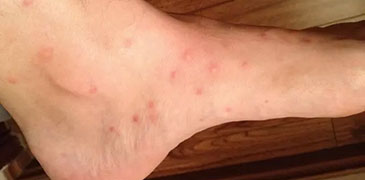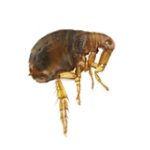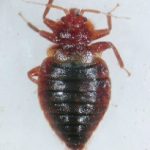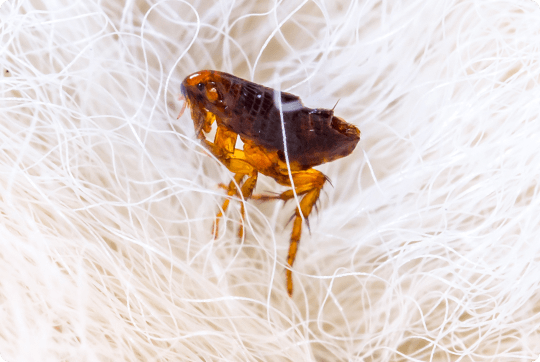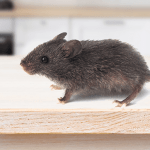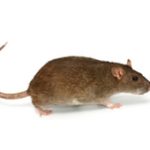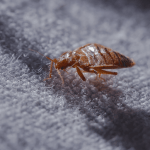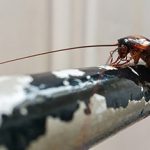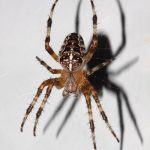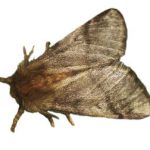How to Get Rid of Fleas in the House
There is no yard state quite as unpleasant as a flea infestation. These infuriating vampires are small and vicious, breeding at such an alarming rate that their kind might seem immortal. Always eager to enter your home, this disease-carrying, pet assaulting pests are already too close if they have taken your garden over.
Immediate attention is required, so here are a few different methods to rid yourself of fleas before you’re the one who is forced to flee. But first…
How Does a Flea Infestation Start
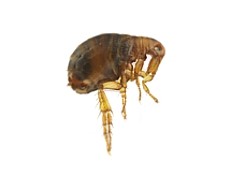
Fleas are seasonal and they simply love high temperatures. That’s why it’s more probable to spot them in summer. They are parasites, in other words, they need a host to live off.
For example – your pet. Not only does your cat or dog provide them with blissful body heat and lots of fur to hide in, but also with all the food they need.
However, fleas can survive outside of a host as well. Another place they love to dwell in is your carpet or your clothes. They can jump very high, so it’s not a problem for them to jump on you, suck all the blood they need for the day, and later go back into the carpet.
A flea infestation can start with only one flea. It can even start from one egg. Usually, flea eggs are sticky, but once they dry up, they can roll around and end up practically anywhere.
And they’re tiny – the size of a grain of salt.
There’s no way for them to be spotted until they hatched and started a population of thousands. And you don’t even need to have a pet for this to happen.
How to Prevent a Flea Infestation
Learning how to get rid of fleas starts with prevention. By taking the right steps, you can avoid the hassle of a flea infestation in your home. Keep fleas at bay by addressing potential sources including your pets, home, and yard, ensuring a flea-free environment all year round.
Flea Prevention for the Pet
The best thing you can do is to treat your pet for fleas regularly. Consult with a vet about how often you should do it. It all depends on the type of pet you own and you would most probably have to do it more often if you let your pet roam outside.
Check also: How do I know if my dog has fleas?
Check more: How to Protect Your Pets from a Flea Treatment Poisoning
Flea Prevention for the Home
To prevent fleas from infesting your home, it’s crucial to keep flea-carrying pests from entering in the first place. Although it’s impossible to entirely eliminate the risk of flea eggs being brought indoors, you can take steps to secure your home and prevent flea infestations:
- Seal cracks and holes: Mice, rats, and other rodents are common carriers of fleas, so it’s essential to seal any openings they could use to enter your home. Check for gaps around doors, windows, and walls to block potential access.
- Replace damaged wood and planks: Timber properties often have weak spots that can serve as hiding places for fleas and other pests. Ensure any rotting planks or floorboards are replaced to eliminate potential flea habitats.
- Keep trash covered: Fleas are attracted to food sources, so always keep trash in tightly sealed bins. Food waste, in particular, draws pests from outside, making it easier for fleas to hitch a ride into your home.
- Remove bird feeders. Bird feeders can attract not only birds but also small mammals like squirrels, raccoons, and even rodents, all of which may carry fleas. To prevent a flea infestation, consider removing bird feeders or place them away from your home.
- Don’t leave pet food outside. While it may seem harmless, leaving pet food outside can attract wildlife and insects, including fleas. Store pet food indoors to avoid drawing pests into your living space.
Flea Prevention for the Yard
Unfortunately, if your yard is full of food, your home might still be in danger. Relax – no one is telling you to stop having a vegetable garden. But here is what you can do:
- Trim the grass;
- Cut back the foliage;
- Water regularly;
- Use natural pest control against fleas.
Read more: How Do I Get Rid of Fleas in My Garden Naturally
How to Get Rid of Fleas in the House
If you’re struggling with how to get rid of fleas in your house, it’s essential to treat the whole property and take extra care for your pet. Here are some steps to follow:
- Treat your pet. First thing’s first – treat the obvious victim of this infestation. You can get loads of anti-flea products for pets.
- Remove your pet from the house. Find a pet sitter or give it to friends or family after it’s been treated. You don’t want the fleas to get on him again.
- Hoover your house from top to bottom. Regular hoovering is an essential to get rid of fleas in your home. Vacuum carpets, upholstery, and furniture thoroughly to remove fleas, eggs, and larvae. Dispose of the vacuum bag immediately. Washing pet bedding, linens, and other fabrics in hot water can also help eliminate fleas and their eggs.
- Launder all clothes and sheets. Temperatures over 90 degrees will kill any remains.
- Use a fogger. Foggers, or the so-called “flea bombs”, are commercial products made to effectively control a flea infestation. They’re full of poisonous chemicals, so you should be careful how you use them. You should always have a mask on and it’s a good idea to have the rest of the family wear one, too. It’s better for the pet to stay someplace else for a few more weeks, just in case.
- Call a professional exterminator. In the end, if you prefer not to do all of this yourself, you can always rely on professional flea control service. A flea treatment procedure can be usually done in only one visit. And the professionals can give you a guarantee for the next 3 months.
Are you dealing with flea infestation?
Make your home pest-free with professional flea treatment!
How to Stop Flea Infestation Naturally
The most natural remedy against fleas is pitting them against their predators. This works especially good for gardens. Red ants would eat all the fleas, however, they would devastate your garden as well. But there are a few other good bugs that eat troublesome insects such as fleas and aphids and, at the same time, do not hard your garden.
- Nematodes. Nematodes are microscopic worms that dwell in the soil. As they move through the soil, they can reduce the flea population by 80 per cent in just about 24 hours.
- Ladybugs. Ladybugs feed on aphids, mites, mealy bugs, and fleas. A mature ladybug is one of the most fierce predators in the insect world as it can eat 60 insects a day.
- Spiders. Spiders eat just about anything, including fleas, but this also means they can choose other things to be on their menu as well. For instance, they prefer bigger prey like flies. So, even though they are helpful, you shouldn’t rely only on them.
Another good idea is to plant herbs that act as natural repellents against fleas.
- Chrysanthemum. Not only a beautiful flower, but also a great flea, cockroaches, ants, ticks, silverfish, and lice repellent.
- Lavender. Except for fleas, it also repels moths, scorpions, and mosquitoes.
- Spearmint. Repels fleas, moths, ants, beetles, rodents, and aphids.
For the best results, it’s good to combine both the beneficial insects and the repelling plants together. Just bear in mind that the plants might repel some of the “good” insects as well.
Homemade Flea Treatment for Carpets
In order to get rid of fleas in your carpet, you can try a DIY alternative to the chemical treatment professionals would otherwise offer you.
- Start by sprinkling salt. Salt is flea eggs’ worst nightmare. It would kill them in a matter of minutes by drying them out.
- Make an eco-friendly spray solution. Fill a spray bottle with water, vinegar, and a few drops of tea tree oil.
- Spray the solution over your salted carpet. This will take care of the fleas in your carpet in no time. But be sure that there will be no survivors left to look for another shelter – your couch, your bed, or anything they deem appropriate. So, unless you want to go through the same thing over and over, you may eventually need to call a professional.
Summer is right around the corner. Don’t let fleas take over your pets, home, and yard. With some hard work and a bit of help from the professionals, you will turn these blood-sucking pests into nothing but fleeting memories.
Top Natural Flea Killers for the Home: How to Get Rid of Fleas Safely
There are several effective and pet-safe options for getting rid of fleas naturally in your home. These methods focus on eliminating fleas without resorting to harsh chemicals, making them suitable for households with pets and children.
- Citrus-Based Sprays
Citrus fruits like lemons contain compounds that are toxic to fleas. To create a natural flea spray to get rid of fleas in your home, boil slices of lemon in water, let it steep overnight, and then spray the solution onto affected areas. Be cautious when using citrus-based sprays around cats, as they may be sensitive to certain compounds. - Essential Oils (Use with Caution)
To get rid of fleas naturally, you can use certain essential oils that can repel fleas, but they must be used carefully, especially around pets. Safe options include citronella, eucalyptus, cedarwood, lavender, and peppermint oils. Dilute the essential oil with a carrier oil and apply it to pet bedding or use it in a diffuser. Remember to avoid oils like tea tree or pennyroyal, as they can be toxic to pets.
Need flea treatment specialist?
Consider that we give an information on possible ways to get rid of fleas. However, we cannot quarantee that all of the above approaches will work for you.



